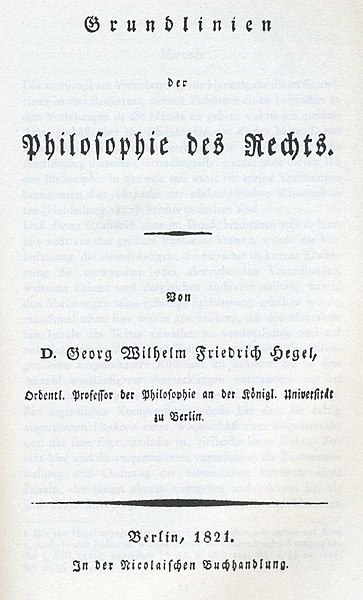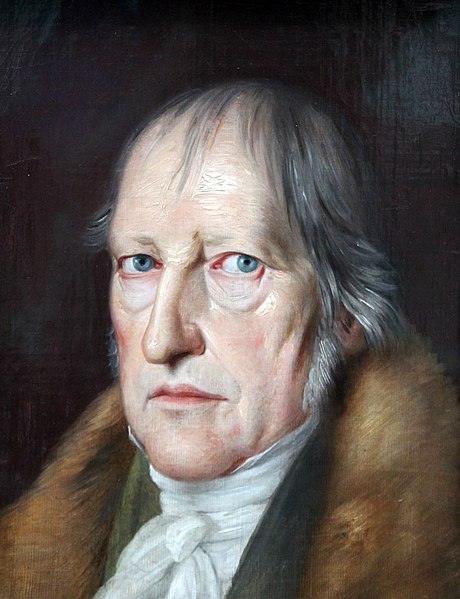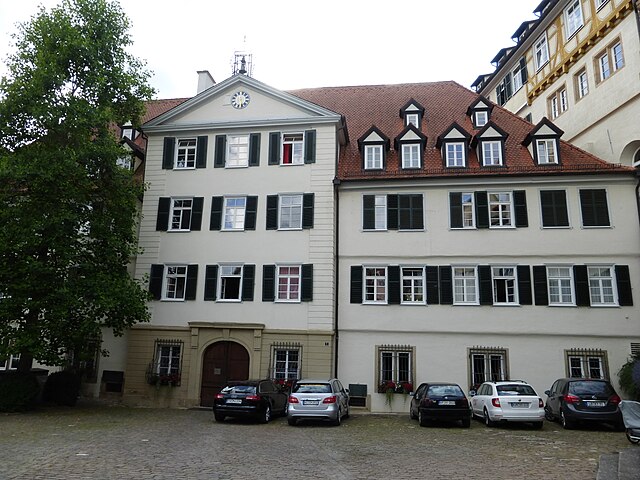Elements of the Philosophy of Right
Elements of the Philosophy of Right is a work by Georg Wilhelm Friedrich Hegel published in 1820, though the book's original title page dates it to 1821. Hegel's most mature statement of his legal, moral, social and political philosophy, it is an expansion upon concepts only briefly dealt with in the Encyclopedia of the Philosophical Sciences, published in 1817. Law provides for Hegel the cornerstone of the modern state. As such, he criticized Karl Ludwig von Haller's The Restoration of the Science of the State, in which the latter claimed that law was superficial, because natural law and the "right of the most powerful" was sufficient. The absence of law characterized for Hegel despotism, whether absolutist or ochlocracist.
Title page of the 1821 original work.
Georg Wilhelm Friedrich Hegel
Georg Wilhelm Friedrich Hegel was a German philosopher and one of the most influential figures of German idealism and 19th-century philosophy. His influence extends across the entire range of contemporary philosophical topics, from metaphysical issues in epistemology and ontology, to political philosophy, the philosophy of history, philosophy of art, philosophy of religion, and the history of philosophy.
1831 portrait
The birthplace of Hegel in Stuttgart, which now houses the Hegel Museum
Hegel, Schelling, and Hölderlin are believed to have shared the room on the second floor above the entrance doorway while studying at this institute – (a Protestant seminary called "the Tübinger Stift").
The poet Friedrich Hölderlin (1770–1843) was one of Hegel's closest friends and roommates at Tübinger Stift.





